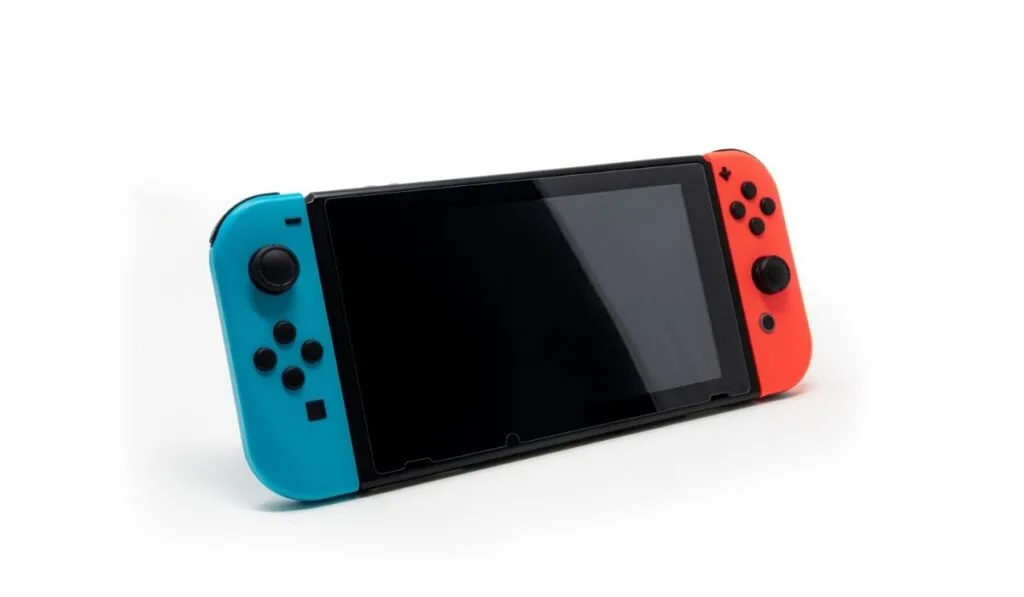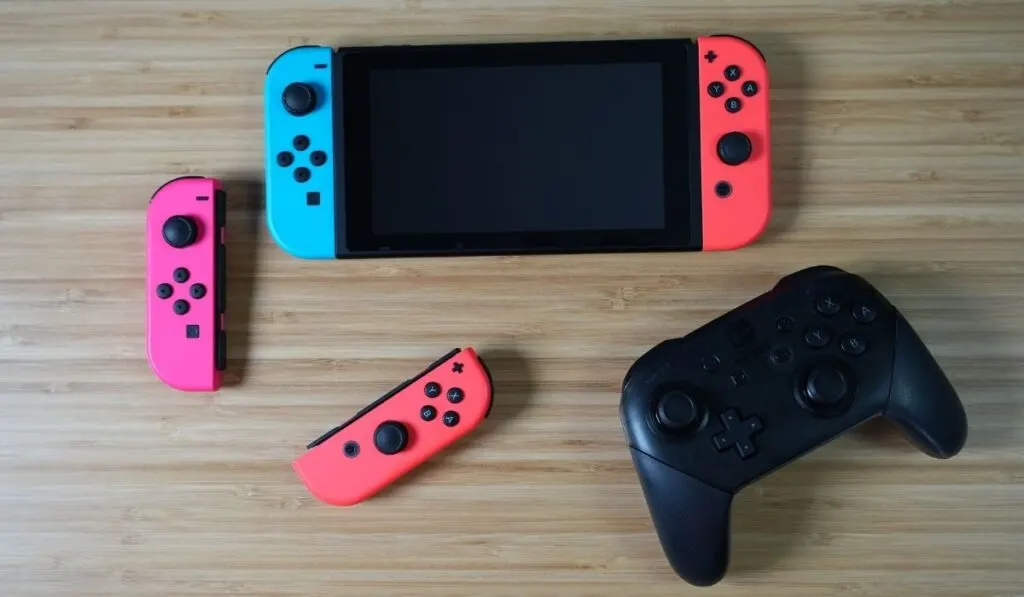There’s nothing more frustrating than this: You’re at the boss in a game or trying to complete a particularly hard puzzle, and… boom! The game crashes. Even worse if you’ve actually already completed that part and you lose your progress before it saves. It happens to everyone at some point, and the Nintendo Switch definitely has some crash issues.
The Nintendo Switch might crash due to coding errors within a game, too much storage in use, time wearing down on the system, and random software bugs. Restarting the game, resetting the Switch, and ensuring you have the latest software is key.
If you’ve been struggling with your Switch crashing and can’t work out what’s causing it or how to fix it, let’s take a look at each of the issues in depth so you can work out the root of the issue and hopefully solve it. Fortunately, most issues with the software of the Switch only require a DIY fix.
What Causes Switch Games to Crash?

There are many reasons a Switch game can crash, whether it’s to do with the game itself or something happening with the console.
Hopefully, you don’t experience issues often, but let’s look at the possible reasons if you’re asking yourself, “Why does my Nintendo Switch keep crashing?”
A Random Software Bug or Coding Errors
Random bugs may develop in games, which is why developers usually provide updates and patches over time. If it’s only one game that keeps crashing and the others seem to be fine, you can look at the developer’s social media to see if it’s a known issue.
If your Nintendo Swtich is also freezing, or if your Switch Lite is freezing for that matter, be sure to skim those related guides.
The Switch Is Tired
There are many reasons your Nintendo Switch might be worn down. Perhaps you’ve had it for years and time is catching up on it, or perhaps you’ve simply been playing it for too long that day.
If you’ve had a game running for many hours (it happens to us all!), then that could be the cause.
Storage Almost Full
If the Nintendo Switch is almost full on storage, you might be surprised at the glitches it can cause — including large games crashing. The Nintendo Switch doesn’t come with a whole lot of data, so head into Settings and Storage to check just how close you are to using all of it. It might be closer than you think.
If you suspect this is your issue, have a storage issue, we’ll address some quick fix steps below but you should also be aware of our related full post on managing Nintendo Switch low storage issues, as well as how many games you should expect the Switch console to handle before that storage fills up.
Damage
At the end of the day, damage can also cause a whole host of issues. This could be corrupted data, which is software damage, or something in the hardware that’s caused more issues than you might realize. Maybe you have some water damage (though we’re sure that if you had a spill recently that’s probably on your radar already…).
How Do You Fix a Nintendo Switch Crashing?
Now that you know the reasons a Switch might crash, it’s time to solve the issue. There are many things you can do to try and prevent this annoying bug from happening again.
Update the Game
Once you’ve checked the developers’ social media to see if it’s a bug that they’re aware of, keep an eye out for an update to the game. This is especially important if it’s a new release. Newly released games often come with plenty of bugs and it takes a few updates and patches to sort them out entirely.
Give the Switch a Break
If you know you’ve been playing a game for a number of hours and the Switch hasn’t had a chance to rest, give it a break. Put it down, put it on charge, and maybe even turn it off for a few hours. You might find that this does the job nicely.
Ease Up on the Storage
If your storage is almost full, it’s time to ease up on it. Delete any game files you don’t use, and remember that save files are independent of the actual game. Deleting a game doesn’t mean you’ll lose your progress — only that you’ll have to re-download to pick up from where you left on.
If there’s a game you haven’t played in months, then it’s time to bite the bullet!
Don’t want to delete anything? Try buying an SD card (on Amazon) and using it as external storage. You can save both games and files onto these, and it means they aren’t stored on your actual Switch.
Another plus to an SD card is that you can move it between consoles if you have more than one. Some people have both a standard Switch and a Switch Lite, for example.
Reset the Console
Resetting the console can solve any manner of software bugs. Here’s how to do it:
- Power the console off.
- Hold down the volume buttons and hit the power button again.
- The console will start in Maintenance Mode.
- Choose Initialize Console Without Deleting Save Data
Once you’ve done this, your console will reset with your files intact.
If you run an update and happen to get stuck in an infinite Nintendo Switch update loop, be sure to see our related resource to manage that.
See a Repair Technician
At the end of the day, some fixes are too complicated to fix by yourself at home. While this is unusual, if you’ve tried all of the above and come up with nothing, send the Switch off to Nintendo or take it to a repair professional.
They’ll be able to tell you if the console’s time is coming to an end or if they can fix it. Remember, the older models of the Switch aren’t as advanced and may be on a limited lifespan.
How to Prevent Nintendo Switch Crashing in the Future

If you’ve managed to solve the issue of your Switch crashing — or have just never experienced it and want to prevent it from happening — there are a few things you can do to take care of your console.
Install Software Updates
We’ve all been there. It’s inconvenient to take the time to let a software update download, so we turn Auto-Update off (you can find that in Settings) and let the updates pile up.
Updates, however, are there for a reason and they often solve bugs, so take the time to install them or turn Auto-Update on.
Minimize Storage Usage
Before you let your storage fill up, be proactive. Purchase an SD card and save some files and games to it. Always keep an eye on how much of your Switch storage is actually in use at the moment.
Protect the Switch
You’d be surprised at how many apparent software issues can be caused by something being physically wrong with the Switch. A great way to prevent any issues is to take care of the console.
Purchase a case with screen protectors (on Amazon) to make sure that if you drop the Switch, it’s protected — though you should also be careful not to drop it too!
Another thing you should avoid is exposing the Switch to extreme temperatures. Whether it’s very hot or very cold, these can both affect the Switch negatively if it happens for a prolonged period of time. Store your Switch in a cool but not cold place.
Stay Vigilant
Watch for other issues that indicate your Switch needs attention, like a power button that won’t work or Switch console that won’t power on. If your Switch starts to run slowly, that’s usually a hint that more problems are on the horizon. No matter what, be sure to reference our expert guides on how to manage your Nintendo Switch.
Close Games Properly
Many people simply exit a game when they’re finished with it instead of closing it properly, and it’s always running in the background, giving the Switch more to do.
Make sure you close the game by hitting the minus sign on your console and choosing Close Game. You should do this every time you’re finished playing; otherwise, the usage can really build up.
Shut the Switch Down When Not in Use
Although the Switch can operate perpetually in Rest Mode, it might be a good idea to fully power it off — at least every now and again. Much like computers and other devices, it’s good for the Switch to get some proper rest so it can recharge (and it’ll also charge faster when it’s powered off, which is another bonus).
